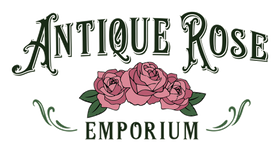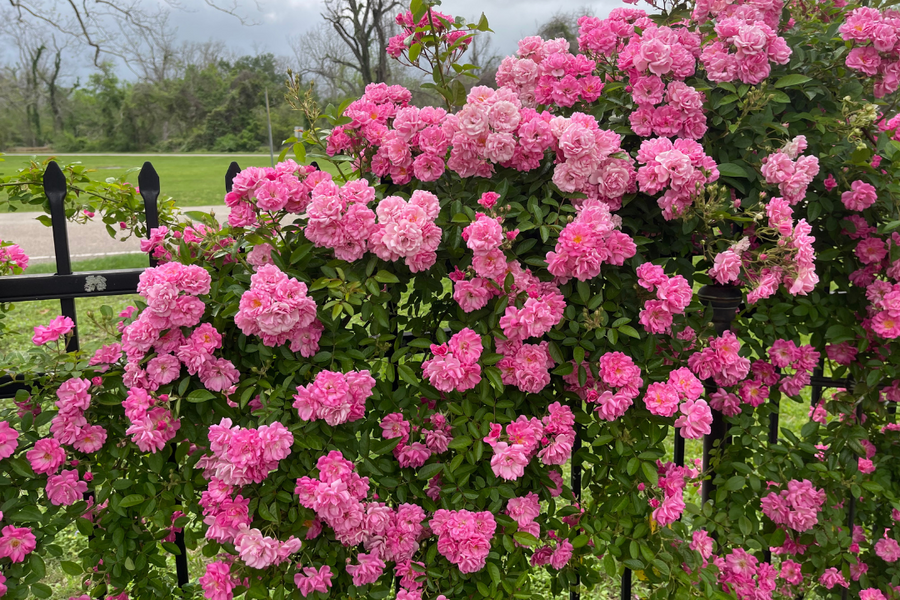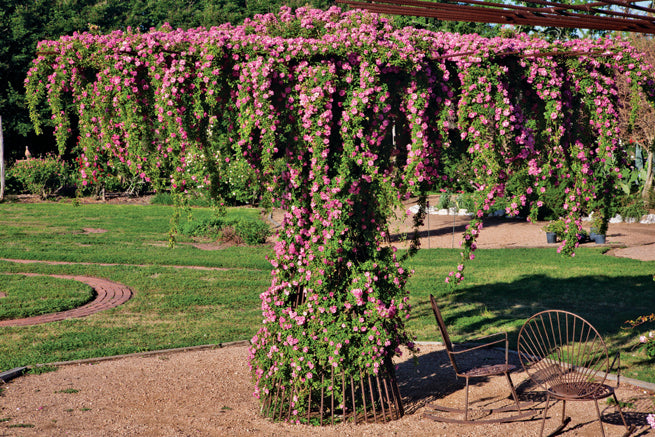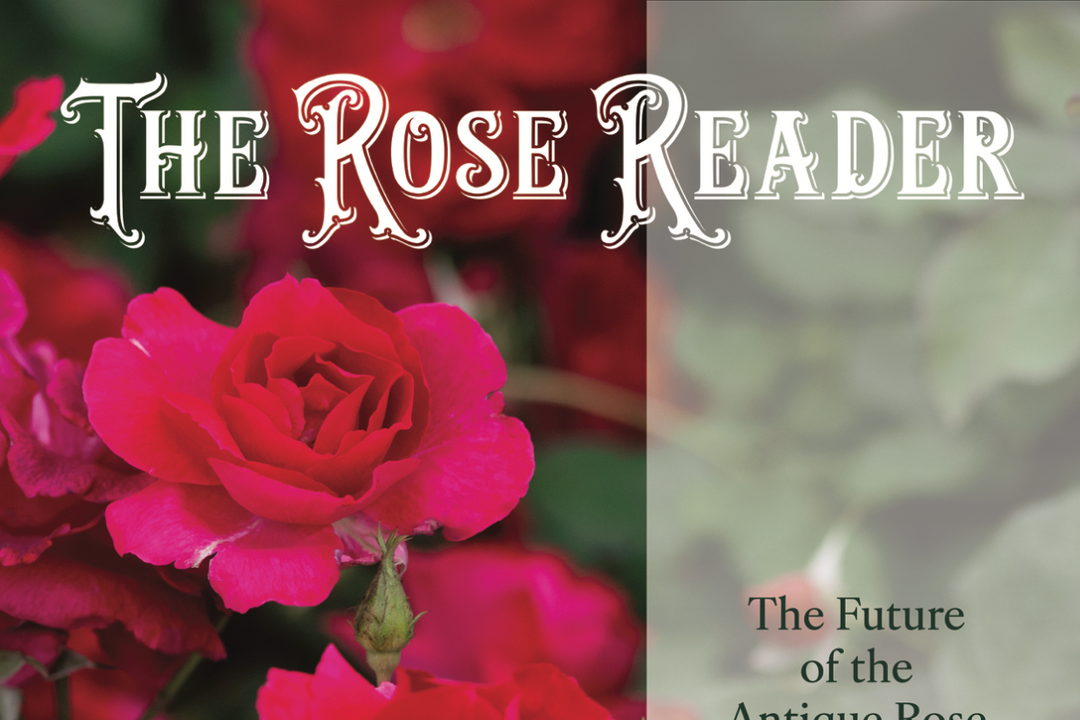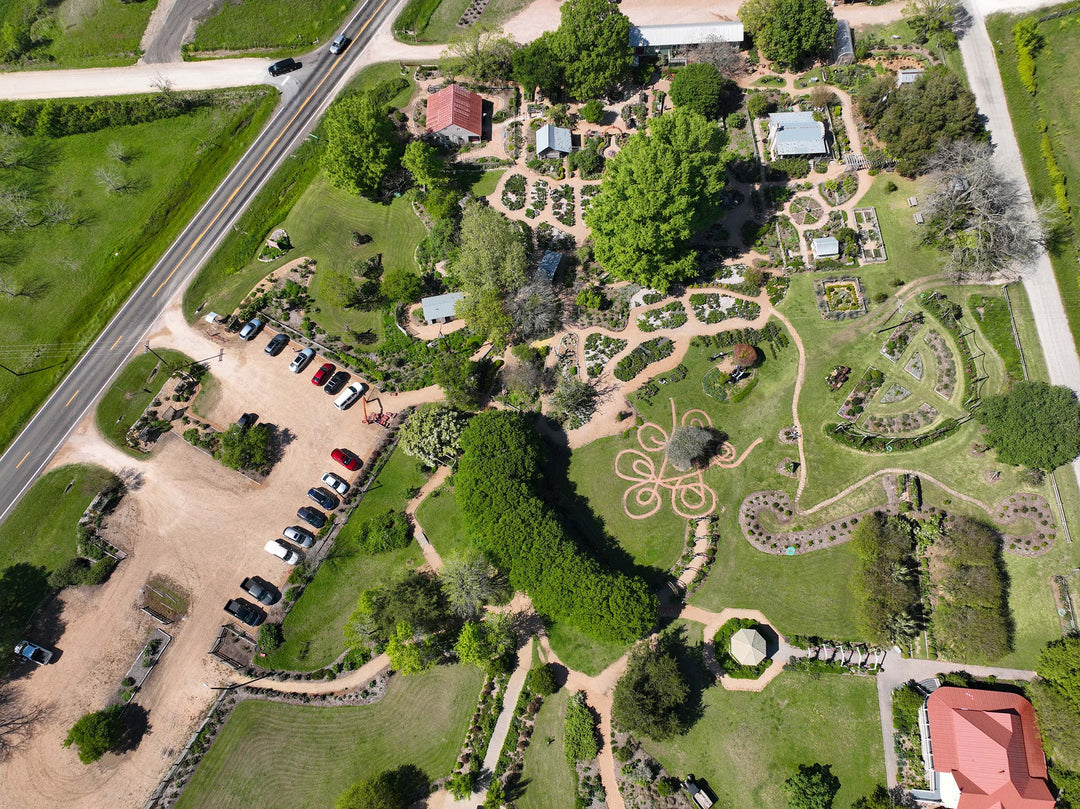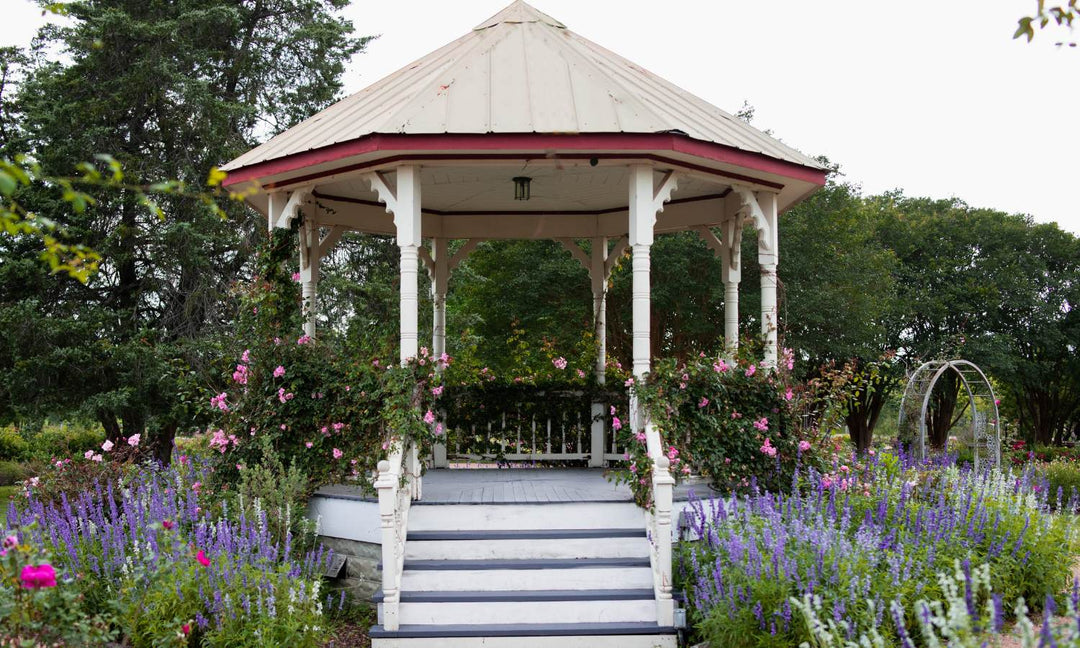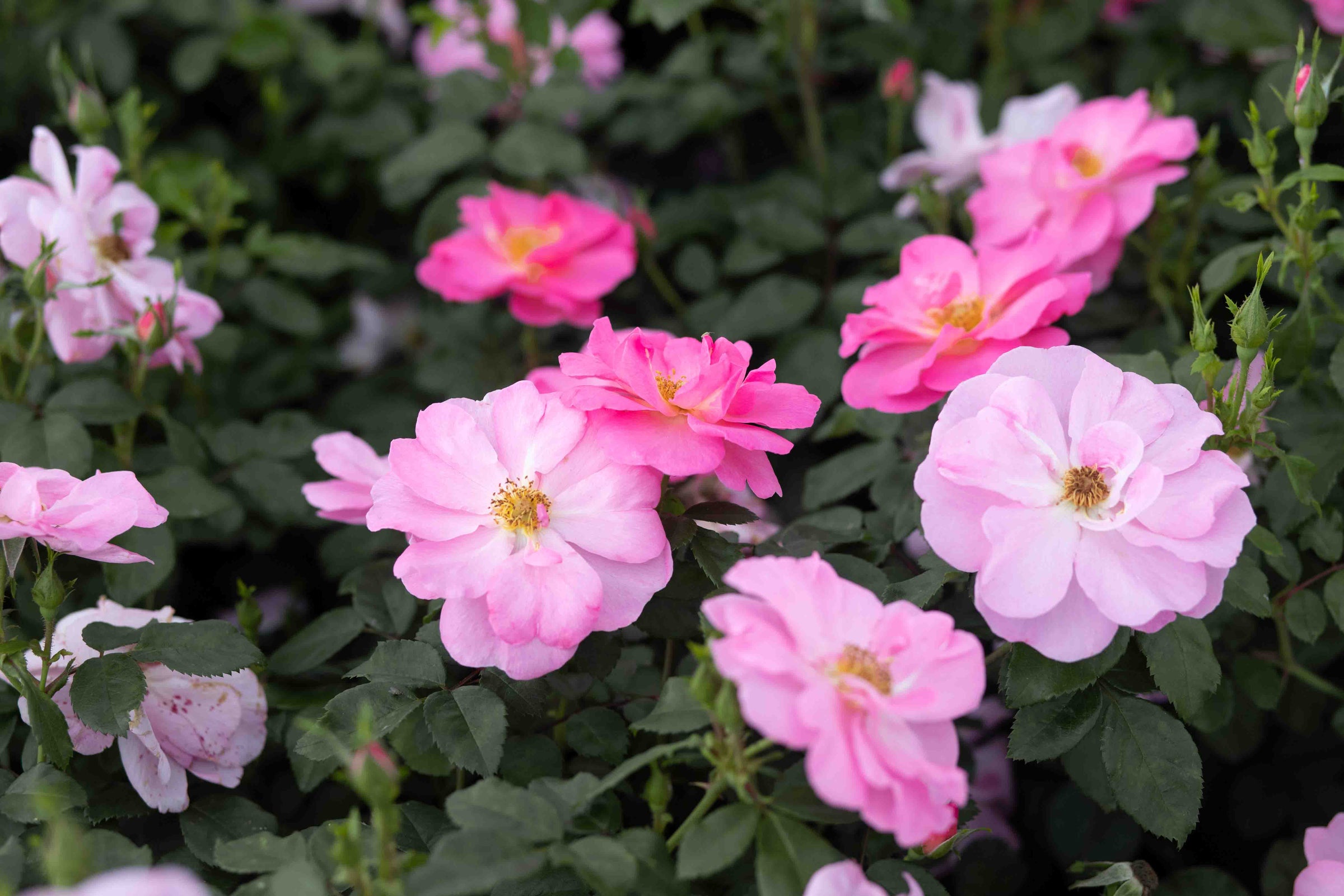
Frequently Asked Questions
All About Antique Roses
True antique roses, or Old Garden roses, are the roses that were around before the introduction of the first Hybrid Tea Rose in 1867, 'La France.' This marked the beginning of the Modern Rose Era.
Old Garden Roses are known for their hardiness, disease resistance, and generally speaking, their vigorous growth. Most of the roses in this collection are Teas, Chinas, Noisettes, Ramblers, Bourbons, and species roses that have proven to withstand the test of time.
The Old Garden roses are the time-tested survivors. Many have resided in old neighborhoods and cemeteries happily growing with no care from human hands, no water other than rainfall, and no nutrients other than what is in the soil. They are hardy and beautiful and the perfect addition to your yard or garden!
All of the roses we grow at the Antique Rose Emporium are “own root roses.” Our own root roses are started in our greenhouses from cuttings. These cuttings are from mature plants. Once the cuttings root, they are grown outside in our 2-gallon pots for the next year. We want them exposed to the elements throughout the seasons. We do cover them when we get extremely cold weather.
A grafted rose is propagated by inserting a cutting into a rootstock from another variety. The cutting and rootstock fuse together forming a single plant. While grafted roses may be larger initially, they are not as hardy as own root roses. They also tend to have a shorter life span, are not as disease resistant, and can produce sucker growth from the variety of the rootstock.
Overall, own root roses have shown to be much hardier, longer living, more disease resistant, and healthier overall.
Rose Shipping and E-Commerce
Antique Rose Emporium maintains high standards when it comes to ALL of the roses we ship. You can expect a 2 gallon own root rose that's pruned to approx. 12-18 inches to accommodate packaging.
Learn more on what to expect when your roses arrive.
Your order confirmation email will include the shipment window you chose at checkout.
Once your ship week has arrived, and our team has packed/shipped your order, you will receive an email update with your tracking number.
Please note that we do our best to accommodate your selected ship week; however, weather, holidays, etc. may impact your shipping timeframe.
You can order online year-round! From the end of May to mid-July, offerings are a bit slimmer just due to inventory. For the biggest selection of rose offerings, we recommend August. This is the time of year when we input the inventory for pre-order for the upcoming shipping season, therefore we have many of the varieties that sell out later in the season. We do not ship during the summer months but entertain preorders for our September to May shipping season!
When ordering online, one of the most important things to consider is the shipping date. We ask that you carefully select your shipping date for your climatic zone and best planting time for your area. If you plan to receive your rose in the fall, it’s important to make sure that you give your roses time to establish themselves and get some root growth before your first frost date.
We do not recommend holding your rose in its original pot after receiving it, so schedule your shipping date according to when you’re planning to plant!
Our inventory resets at the end of summer/the beginning of fall. If there is a select variety you’re interested in and would like to receive a notification when our inventory has been updated, you can view the listing on our website and opt in to “Join our waitlist” and be notified via email when the item is available.
Inventory online does not reflect inventory at the Nursery and Display Gardens. If you would like to check on a variety at our Nursery and Display Gardens to make sure it is in stock before you visit, give us a call and we’d be happy to check on it for you! (979) 836-5548
Our roses are packaged into our 1 plant, 2 plant, 3 plant, or 4 plant boxes. They are held in place and protected in transit by our specially designed insert sleeve.
The roses are shipped in their two-gallon containers.
For a more detailed explanation, please visit What to expect upon arrival.
Please be aware that the roses are pruned to fit in the boxes, they are also defoliated prior to shipment to help maintain the health and integrity of the plant.
The Antique Rose Emporium ships to all of the continental United States. We do NOT ship to Alaska, Hawaii, and the territory of Puerto Rico at this time. We do NOT ship internationally.
We are located in east Texas where summer temperatures can get pretty high. When our temperatures start to rise into the high 90’s, the plants would suffer while in transit. We have found that the most successful shipping season is from mid-September to mid-May.
That being said, it is still best to choose the proper time for your zone.
We do not recommend shipping to northern climates during the winter due to the extreme cold.
There is an option at checkout to choose your desired shipping timeframe; please choose a time period for your climate that is not too hot, so the rose doesn’t experience heat stress, or too cold, so the rose is not shocked when it arrives.
The Antique Rose Emporium grows and sells two-gallon, own root roses. Roses are shipped from September to May, with exceptions during freezing weather both in our area and the recipient’s area. We do not ship during the summer due to heat stress. For details on how exactly your rose will be packaged check out this page!
The inventory reflected on our website is ONLY inventory to be shipped.
The inventory at the nursery and display gardens changes on a daily basis during the high traffic season. If there is a specific rose that you would like to bring home, we recommend calling to ensure that the nursery has it in stock. (979) 836-5548. Currently, we do not have the ability to support ordering online to pick up at the nursery.
Rose Care and Troubleshooting
Pruning is used to accomplish a few different things. Pruning opens the plant up, allowing more airflow through the plant, preventing many different fungal diseases. This leads to a healthier plant and allows you to shape your rose to fit your garden, while encouraging new growth and blooming. Whether you have a small shrub rose, or a 20’ climber, your rose can be shaped to fit where you want it to grow. It is very hard to kill a rose bush by pruning too much and almost any mistake will grow back out quickly.
The main goals when it comes to pruning are:
1. Removes old, dead, diseased or winter damaged wood.
2. Removes new growth that is crowding the interior of the plant. This allows better airflow through the plant, helping prevent disease.
3. Shapes your rose to how you want it to fit your garden. Whether you want to keep your hedge row in check or train your climbing rose to an arbor or fence line, it is really up to the eye of the gardener.
Typically, the best time to prune is early spring or early fall. A heavy pruning in early spring is great for encouraging new growth and a healthier plant. A lighter pruning might be all that’s necessary in the fall to maintain the shape of the rose in check. Pruning helps encourage new growth. Summertime is generally too hot and wintertime the plant is going into dormancy and may be hard to determine what is or isn’t dead wood. Deadheading can be done year-round to help encourage new blooms after the old ones fade. If you want hips on your rose, avoid deadheading.
Many roses, yes, will bloom the first year! That being said, there are some varieties that will start blooming within their second year of growth. We do offer a few once blooming shrubs, as well as climbers, that may take a bit longer to showcase their beautiful blooms. Enviromental factors and care also play a role how soon roses will bloom in their new homes. Please keep in mind that while your rose is reaching maturity, qualities such as bloom size, fragrance, petal count, and color may vary a little bit. As the plant matures, it will bloom true to form and color.
Some roses such as climbers and ramblers put most of their energy into growth the first year and may not bloom until the second year. Other factors may be lack of nutrients, overabundance of nutrients, underwatering, or overwatering. Also ensure that your rose is receiving at least 6 hours of direct sunlight per day. Roses need sunlight and a balanced mix of nutrients to bloom well.
Yes! Mulching is great for your roses in a variety of ways. Mulching helps control and minimize weed growth.
Mulch acts as insulation for your rose. In the summer, it can help keep soil temperatures lower. In the winter, it helps to protect the roots and stem from hard freezes. Mulch aids in promoting the activity of beneficial soil organisms and helps to conserve water and keep the soil moist.
As mulch breaks down and decomposes, it helps to aerate the soil and provide natural nutrients leading to healthier soil. These are nutrients that your rose needs for healthy growth and blooms.
We recommend a 2-4 inch bed of mulch around your rose in early spring time and again in the fall as routine maintenance, potentially adding more before winter frosts for increased protection from the cold.
Many of our offerings are naturally tougher and more resilient, making chemical sprays unnecessary. This inherent disease resistance has allowed them to survive with less interference, making them a great choice for modern homeowners not wishing to spray. The best way to prevent disease or pests from affecting your rose is to ensure the plant is well fed, hydrated, and in a correct location. This includes proper amount of sunlight, proper (and organic) fertilization, watering, airflow, etc.
In some cases, humid areas and cool weather can cause black spot and mildew. These are common problems and very easy to treat. Insects and pests can vary as well depending on the region in which you live.
To treat many of these common ailments, we recommend using a natural Neem oil spray. Using this when symptoms of fungus, insects, or pests first appear, can be extremely effective. Affected areas of the plant can be pruned back and new, clean growth will return. For the gardener that does not wish to use chemicals, there are many other wonderful natural remedies for common ailments.
We do offer neem oil as well as some incredible organic food for the roses both online and at our Nursery and Display Gardens.
Good care will almost always prevent the need for harsh synthetic chemical sprays.
A well-fed rose will be a healthier rose overall. It will help prevent disease from setting in, and a healthier plant will produce higher quality blooms. Using organic-based fertilizers has been beneficial in promoting the appearance, duration, and sustainability of our gardens. We believe in “feeding the soil” so the soil can feed the plants. Healthy soil makes healthy roots, makes healthy roses, makes beautiful blooms!
Follow the instructions on the fertilizer of your choice! We do offer several different options that we like and have had positive results with. Fertilizing is best in the spring and fall.
Placement of your rose is critical to the success of the plant. Many factors go into picking a spot for your rose or choosing a rose to fill a certain spot. Factors include sunlight, airflow, soil conditions, and space.
Sunlight: Roses need at least 6 hours of full sunlight each day. This can vary slightly on your climate and the sun intensity. In northern climates where daylight times can be shorter, a location with more sun exposure is beneficial. In southern climates, like here in Texas with our intense summers, a small amount of shade during the day can also be beneficial.
The best rule of thumb is that the rose is getting 6 hours per day of sunlight.
Soil Conditions: Roses prefer well-draining soil. If your soil is heavy clay and it could be beneficial to add a garden soil/compost mixture when planting.
Space: One of the biggest factors to consider when selecting your rose is the spacing. It’s important to consider the space that the rose will need when it is mature, not just when you receive it. The other important thing to consider is the growth habit. Some climbing roses can get up to 30 feet tall! Others form a large hedge. When selecting a rose for your space make sure to find one that fits your needs.
Climbing roses should be planted on some form sturdy of structure for them to climb on, and roughly 6 feet apart.
Many shrubs need roughly 30-36” of space, they can be planted at 24” if your goal is to form a hedge.
Some miniature varieties may only need 12-18” of space when fully mature.
Just be sure to consider the size of the mature plant and what your space can accommodate.
Roses can be successful when planted both in ground and a large container. In both cases you want a well-draining soil that doesn’t hold water (roses like water but not soggy feet). Container grown roses also benefit from more frequent fertilization. When planting in a container, it is important that the container is not too small, and the rose has ample room to put on root growth. A miniature rose may do well in a 5-7 gallon container, whereas average/larger shrubs may require something much larger such as half a whiskey barrel (20-25 gallon).
As a general rule of thumb, we recommend a container the size of half a whiskey barrel for shrub roses. This allows plenty of room for the root system to grow as the plant matures.
It is not a recommended practice to grow climbing roses in a container.
The best time to plant your rose is in the fall or in the spring. Fall is the best time in many southern climates because the plant has time to establish a good root system while the rest of the plant is getting ready to go dormant for the winter. When summer comes the plant will be well established and better able to handle the intense heat. In many northern climates the best time may be the early spring, this way the plant has time throughout the spring, summer, and fall to establish itself before the harsher winters.
We recommend planting your rose in its new home as soon as possible! We do not recommend holding the rose in its original pot for more than one month after receipt. You can always delay your shipping until you are better ready to receive and plant your rose. In our Guarantee and Refund Policy, we do state that if the plant is held in the original container for over a month after receipt the guarantee will be voided.
Climbing roses need a more tough-love yet easily repeatable method of training. We recommend a heavy hand in shaping them to your desired look. If you would like something neat and tidy, it’s going to take a bit more maintenance than an area that you want the rose to potentially take over. To keep a climbing rose tidy, all available canes should be tied on the structure (trellises, fences, arbors, entryways, pergolas, etc.) with a jute or other natural twine. Stretch tie is a great option for this as it will allow the canes to grow and not cut into them! Any excess or unwieldy canes should be removed. The best time to train your rose is twice a year, before the spring and fall growth.
When you first plant your rose, you would water it regularly and keep the soil from drying out. After your plant is established, you can cut back to a good soaking once or twice a week (depending on your climate). This encourages the roots to go deeper into the ground which will help the rose to survive during summer heat and winter freezes.
Unfortunately, there are no roses that are deer resistant, and roses happen to be a delicious treat for deer. Even the thorniest varieties won’t deter them when they’re hungry. There are several options to help deter the deer from eating your hard work in the garden. One option is planting deer resistant companion plants around the rose, such as lavender, Agastache, sage, rosemary, and many other strong scented plants. This option can be great, however if the deer are hungry enough, they still find a way in. Truly, the most effective way to keep deer away from your roses is going to be fencing. This can be done around the rose itself or high fencing around your property as a whole.
Late Summer to Early Fall (Before Frosts Begin)
In late summer to early fall, fertilize and prune your roses, but be sure to stop both at least six weeks before your first expected frost date. Using organic fertilizer and compost helps roses handle extreme weather more effectively. Avoid pruning too close to frost season, as pruning triggers new growth that is vulnerable to cold. You should also stop deadheading in early fall so your roses can naturally enter dormancy.
Mid to Late Fall (Preparing for Cold Weather)
During mid to late fall, begin insulating your roses by applying mulch. Roses in zones 8–11 benefit from up to four inches of mulch, while those in zones 7 and below may need up to six inches. Coarse mulches- such as bark- should be used sparingly, while looser mulches like pine needles can be applied more generously. Avoid using chemically dyed mulches. In areas that experience freezes, mound mulch above the soil line around the base of each rose for additional protection, but never pull soil from around the plant; always add more mulch instead. Just before your first expected frost, give your roses a deep watering to help the soil retain warmth and prevent the roots from becoming brittle.
Winter (During Freezes and Dormancy)
During winter, roses may need protection during periods of freezing temperatures. In zones 8–11, cover roses if temperatures drop below 32°F for more than 24 hours or anytime temperatures reach 28°F or lower. In zones 7 and below, cover roses during hard freezes or winter storms. Frost cloth, old sheets or blankets, burlap, and rose cones all work well. Remove coverings once temperatures consistently rise above 33°F and the freeze threat passes. Continue watering every two to three weeks- only when the soil is not frozen- making sure the top three inches of soil dry slightly between waterings. Adequate moisture prevents winter desiccation. Whenever possible, ensure your roses still receive at least six hours of sunlight per day.
Container Roses
Container roses are more vulnerable in winter because their roots sit above ground, so additional protection is important. They should still receive as much sunlight as possible during cold weather. Add two to three inches of mulch over the soil surface for insulation, and follow the same fertilizing and pruning timetable as in-ground roses. If temperatures drop below 32°F for more than 24 hours, move containers to a sheltered, unheated location such as a greenhouse, garage, or shed- never indoors or near artificial heat. If the pot is too large to move, cover both the pot and canes with frost cloth, burlap, or a similar breathable material. Water thoroughly before moving or covering, and continue watering every few weeks whenever the top three inches of soil become dry. After the final frost, return the roses outdoors and resume pruning and fertilizing to encourage new growth.
Climbing Roses
Climbing roses follow the same general winter-care guidelines as all other roses. In zones 7 and below, give climbers a somewhat heavier pruning in late summer or early fall. Remove dead or stray canes that may be damaged or whipped by wind. For winter protection, tall climbers can be loosely tied together and wrapped with a protective cloth, while shorter climbers can be carefully bent toward the ground and covered. In colder zones, such as zone 6 and below, consider covering the canes with soil or mulch for additional insulation.
Nursery and Display Gardens
Antique Rose Emporium has a lot to offer! Follow the links here to learn more about weddings, venue rentals, garden tours, photography, garden coaching services, or upcoming events we're hosting.
The Nursery and Display Gardens are open year round, except for major holidays! For the fall, we recommend visiting between late September through November. For a springtime visit, March to May. These are typically the times of year that the gardens are looking their best! That being said, being in Texas, sometimes we get beautiful flushes of blooms in December when the weather is nice.
The Nursery and Display Gardens receives their influx of inventory in September! That being said, they do maintain a healthy variety of offerings from September to May. Summer months do wane a little bit due to the high traffic seasons.
If there is a specific variety you are looking for, we recommend calling because inventory does vary on a daily basis. (979) 836-5548
The inventory reflected on our website is ONLY inventory to be shipped.
The inventory at the nursery and display gardens changes on a daily basis during the high traffic season. If there is a specific rose that you would like to bring home, we recommend calling to ensure that the nursery has it in stock. (979) 836-5548. Currently, we do not have the ability to support ordering online to pick up at the nursery.
Yes, we've gathered a list of preferred BnB and hotels.
Have a question about your roses or troubleshooting?
Review our guarantee or contact roses@weareroses.com.

